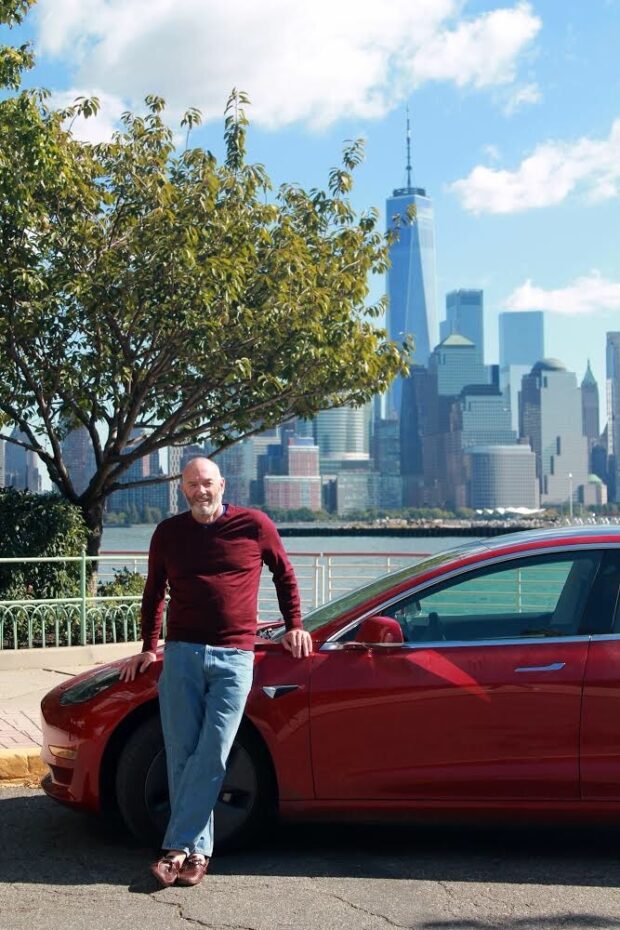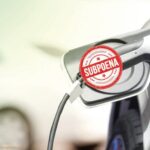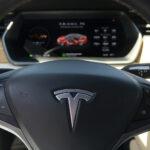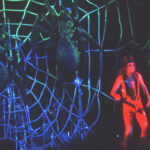In 2016, Mike Nelson, the founder of InsurTech Quantiv Risk, bought his first Tesla and embarked on a 12-state cross country trip to get a first-hand understanding of where automobile technology was headed.
Nelson, who has more than 40 years of experience in the insurance industry, first as a claims adjuster and then as a commercial litigator and regulatory attorney, recently told Carrier Management about his journey to launch a technology startup focused on making sense of performance data from vehicles with ADAS, advanced driver assistance systems. (Related article, “Lawyer-Turned InsurTech Founder Looks Into Cloud to Settle Tesla Auto Claims“)
But what’s it like to navigate a Tesla?
Still driving Teslas—these days, a 2019 Tesla Model 3—Nelson regularly reports on its unexpected behaviors in various traffic scenarios. “I drove it this morning,” he said, confirming that the Tesla is his everyday vehicle. “I love my Tesla when it works,” he writes on LinkedIn.
“It does the stupidest things sometimes,” however, he told Carrier Management. “Sometimes on highway ramps where there’s construction work going on, they put up a temporary stop sign with flashing red lights to tell the people on-ramping to stop before they enter. You’re driving on the highway and the car sees the stop sign, it stops for it,” he said, describing his Tesla’s similar reaction to flashing yellow lights that indicate a curving road ahead.
“It’s scary. You can trust this technology too much,” he said, describing another situation that pops up a lot for him when he drives on Route 81 in Pennsylvania toward Scranton, the closest major city to his home. “If I’m in the low-speed lane…closest to an on-ramp, a car coming onto the ramp will scare the Tesla. So, the Tesla slows down.”
“The car that’s on the ramp is trying to feather in and give you the right of way…So that car slows down. The Tesla then slows down [further] because it’s aware of the car that’s beside it…I’ve ridden these people into the breakdown lane as they’re at the end of the ramp and my car’s down to zero. I’m stopped in the middle of a highway,” he said, noting that he’s learned to work around the technology to take it out of Autopilot.
While the lawyer enjoys driving his Tesla, he regularly returns to discussing the risks and bigger questions that are emerging with the development of automated driving technology.
“As a society, we’re going to have to work on the public policy issues that are going to pop up in the very short term,” he told Carrier Management at one point, referring to a widely reported California case in which a Tesla owner operating his vehicle on Autopilot is facing manslaughter charges, to issues of how to apportion fault when car and human both make mistakes, and to public policy that needs to take share around data access.
“We have to make peace with [the] ADAS problem, [where] we have the human being in the middle of this,” he said as he described the inability of humans to react quickly enough to correct faster-thinking technology of vehicles that aren’t yet fully autonomous.
Related article, “Lawyer-Turned InsurTech Founder Looks Into Cloud to Settle Tesla Auto Claims”





















 Nearly Half of 100 Largest P/C Insurers Destroy Value: ACORD
Nearly Half of 100 Largest P/C Insurers Destroy Value: ACORD  Carrier Management’s 2025 Top Features (Reader’s Picks Unlocked)
Carrier Management’s 2025 Top Features (Reader’s Picks Unlocked)  Northern California Flooding This Weekend Caused by Heavy Rain, High Tides
Northern California Flooding This Weekend Caused by Heavy Rain, High Tides  Breaking: Andersen to Replace Zaffino as CEO of AIG on June 1
Breaking: Andersen to Replace Zaffino as CEO of AIG on June 1 









